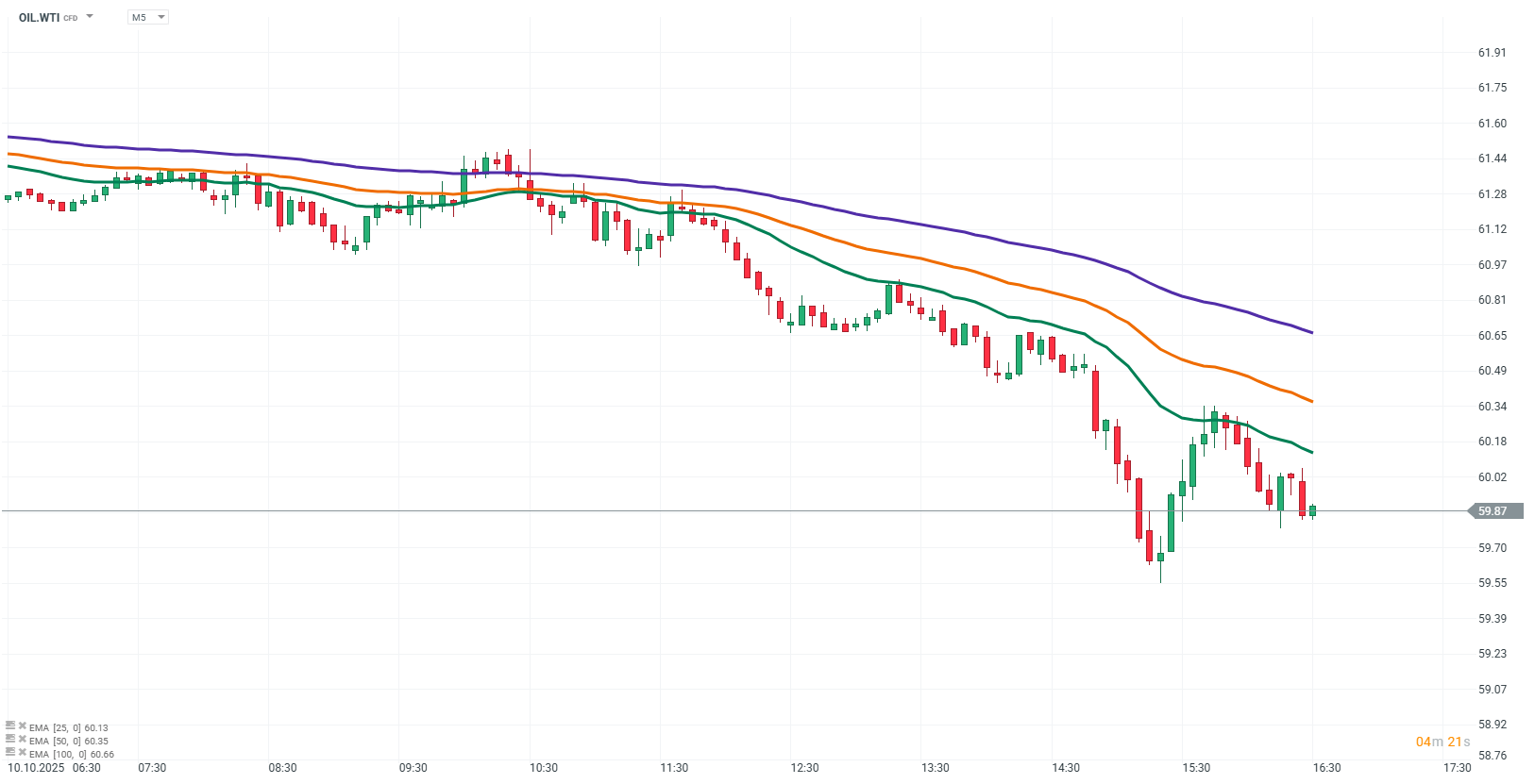- WTI crude oil prices fell by about 2% on Friday.
- The decline is due to the ceasefire agreement between Israel and Hamas, which reduced geopolitical risk and eased concerns about supply disruptions from the Middle East.
- WTI crude oil prices fell by about 2% on Friday.
- The decline is due to the ceasefire agreement between Israel and Hamas, which reduced geopolitical risk and eased concerns about supply disruptions from the Middle East.
On Friday, the price of WTI crude oil dropped by over 2 percent, reaching around $59.90 per barrel, the lowest level since May this year. This decline was mainly due to the signing of a ceasefire agreement between Israel and Hamas, which reduced geopolitical risks and lowered the risk of disruptions in oil supplies from the Middle East. The agreement includes, among other things, the release of hostages by Hamas and the withdrawal of Israeli troops from Gaza, which calmed market sentiment.
Despite this easing of tensions, investors remain cautious due to fundamental challenges in the market. First, OPEC+ is increasing production, although at a slower pace than expected, which partially alleviates concerns about a supply glut but does not eliminate them entirely.
Second, uncertainty about demand persists, especially in connection with the ongoing U.S. government shutdown lasting more than 10 days. This prolonged shutdown is negatively affecting the U.S. economy’s condition, which may lead to reduced fuel consumption in the upcoming winter season.
As a result, the WTI market is balancing between reduced geopolitical risk and pressure from oversupply and weakening demand. If no new tensions or supply disruptions arise, further downward pressure on oil prices can be expected.

Chart of the day: US100 (20.11.2025)
NVIDIA Beats Expectations: The AI Powerhouse Saving the Future
BREAKING: FOMC minutes - many against December cut!
Daily Summary: Market attempts recovery, all hope in Nvidia


